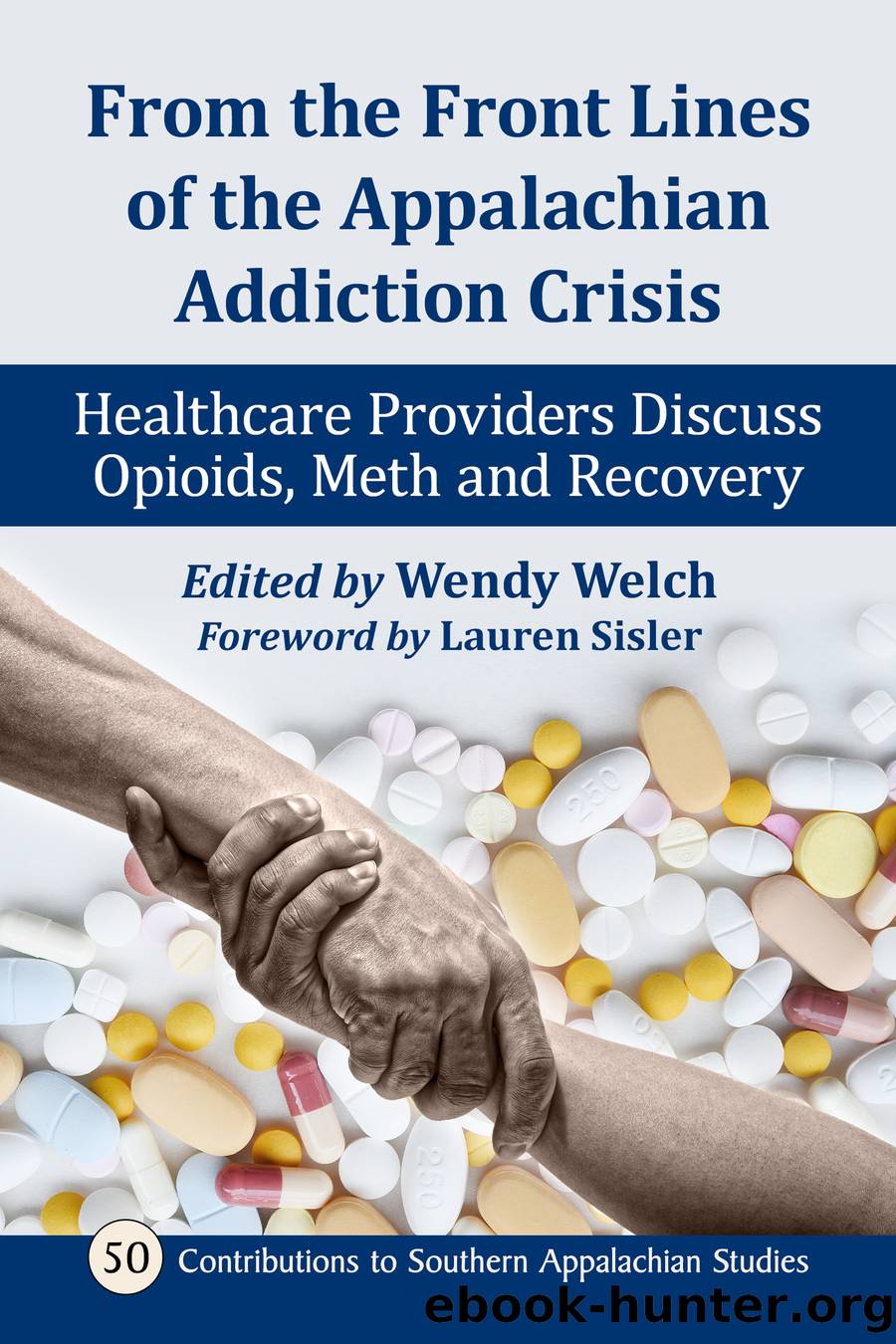From the Front Lines of the Appalachian Addiction Crisis: Healthcare Providers Discuss Opioids, Meth and Recovery by Wendy Welch

Author:Wendy Welch
Language: eng
Format: epub
Publisher: McFarland & Company, Inc., Publishers
Published: 2020-08-07T00:00:00+00:00
Why Addiction Care Is Primary Care
Melissa L. Zook, MD, FAAFP, FASAM, AAHIVS
I believe healing begins by collecting the patientâs story.
Consequently, transforming the practice of substance abuse treatment begins with telling the story of how our little practice made a dent in the opiate epidemic, one patient and one family at a time. Substance abuse is not a problem of bad behavior and poor choices, it is a chronic brain disease. Substance abuse, like other chronic diseases such as diabetes, asthma and migraine, waxes and wanes over time. There can be long periods of remission, of control over the disease, when the sufferer is Âsymptom-free. Remission is punctuated with periods of relapse, also often lasting years, when the disease is in control, when its tentacles ensnare the brain and override internal logic and Âself-control systems.
A comprehensive arsenal of treatments long term is necessary for chronic diseases like substance use. These include medications, education, behavioral change therapies, lifestyle changes, and family and community support. As a family physician, I am a chronic disease management and behavior change expert. My goals are to manage the patientâs symptoms and Âco-occurring illnesses, optimize my patientâs chances for a productive life, reduce mortality, improve birth outcomes, andâabove all elseâreduce harm whenever possible. Substance use treatment in primary care also improves public and future health by reducing unplanned pregnancy, the transmission of infectious diseases, child neglect, family disruption, crime, untreated mental illness, and overall mortality.
These are all primary care issues.
As a family physician, my office is my patientâs medical home. My practice is the doorway through which people enter the health care system and I am the guardian of my patientâs medical story. I treat acute problems, manage chronic disease, recommend and perform preventive screenings and vaccinations, discuss behavior change, and refer to experts and resources that can assist my patients when I cannot. The medical home is an ideal model for substance abuse recovery because primary care is accessible to almost everyone: comprehensive, continuous through all stages of life, Âfamily-centered, coordinated with community resources, and culturally aware.
People suffering from addiction are not a âthemâ or âthoseâ people. Many patients suffering with substance use disorder already have a medical home. They are already patients, and, given the opportunity, want to disclose their addiction and receive help. And, if at all possible, patients prefer to keep the treatment of all of their medical problems in their medical home.
For the past seven years, I have included substance abuse treatment as part of the medical home, providing Âmedication-assisted treatment (MAT) for opioid addiction to pregnant women, current adult patients, and new patients. This is in addition to preventive, primary, and chronic care for pediatrics through geriatrics. As a result, I know how well a family is doing both as individuals and as a whole. Prioritizing family members of current patients for entry into the MAT program means kinship webs in my practice are growing continuously.
Iâve been practicing as a primary care family medicine physician in southeastern Kentucky since arriving as a National Health Service Corps scholar fresh out of residency in 2004.
Download
This site does not store any files on its server. We only index and link to content provided by other sites. Please contact the content providers to delete copyright contents if any and email us, we'll remove relevant links or contents immediately.
Spare by Prince Harry The Duke of Sussex(5074)
Machine Learning at Scale with H2O by Gregory Keys | David Whiting(4186)
Fairy Tale by Stephen King(3220)
Will by Will Smith(2794)
Hooked: A Dark, Contemporary Romance (Never After Series) by Emily McIntire(2502)
The Bullet Journal Method by Ryder Carroll(2487)
Rationality by Steven Pinker(2291)
Can't Hurt Me: Master Your Mind and Defy the Odds - Clean Edition by David Goggins(2228)
It Starts With Us (It Ends with Us #2) by Colleen Hoover(2200)
Friends, Lovers, and the Big Terrible Thing by Matthew Perry(2120)
The Becoming by Nora Roberts(2088)
Love on the Brain by Ali Hazelwood(1965)
HBR's 10 Must Reads 2022 by Harvard Business Review(1778)
The Strength In Our Scars by Bianca Sparacino(1777)
A Short History of War by Jeremy Black(1763)
Leviathan Falls (The Expanse Book 9) by James S. A. Corey(1651)
515945210 by Unknown(1600)
A Game of Thrones (The Illustrated Edition) by George R. R. Martin(1591)
Bewilderment by Richard Powers(1539)
